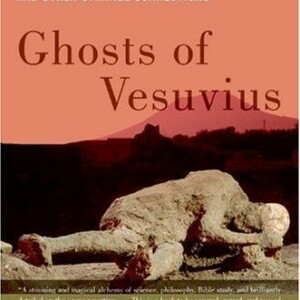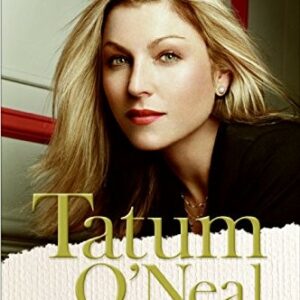Moon Woke Me Up Nine Times
$18.00
| Title | Range | Discount |
|---|---|---|
| Trade Discount | 5 + | 25% |
- Description
- Additional information
Description
Vivid new translations of Basho’s popular haiku, in a selected format ideal for newcomers as well as fans long familiar with the Japanese master.
Basho, the famously bohemian traveler through seventeenth-century Japan, is a poet attuned to the natural world as well as humble human doings; “Piles of quilts/ snow on distant mountains/ I watch both,” he writes. His work captures both the profound loneliness of one observing mind and the broad-ranging joy he finds in our connections to the larger community. David Young, acclaimed translator and Knopf poet, writes in his introduction to this selection, “This poet’s consciousness affiliates itself with crickets, islands, monkeys, snowfalls, moonscapes, flowers, trees, and ceremonies…Waking and sleeping, alone and in company, he moves through the world, delighting in its details.” Young’s translations are bright, alert, musically perfect, and rich in tenderness toward their maker.David Young has written eleven previous books of poetry, including, most recently, Black Lab and Field of Light and Shadow: Selected and New Poems. He is a well-known translator of the Chinese poets as well as the poems of Petrarch and Eugenio Montale. A past winner of the Guggeheim and NEA Fellowships as well as a Pushcart Prize, Young is the Longman Professor Emeritus of English and Creative Writing at Oberlin College and the editor of the Field Poetry Series at Oberlin College Press.
Introduction
The seasons wheel past, majestic, troubling, and reassuring. Their procession signals constant change and a transient existence, but their repetition provides a sense of stability. Basho’s world is a world of hardship and poverty, but even life’s privations and disasters can disclose delights that enlarge his awareness, his enjoyment of being-in-the-world.
By allowing his participation in the beauty and variety of its particulars, large or small, the earth on which Basho lives permits him to transcend his own ego:
Crawl out
from under the shed
toad-croak
It is summer on the farm, in this case, and the simple delight of encountering a different creature is, for this poet, sufficient occasion for a poem. The toad is also allowed his voice; his is the music of the poem, in effect, echoing the poet’s greeting. They share a moment of identification and identity.
Sometimes the visual effect is more imposing:
A line of egrets
making a bridge
between two snowy peaks
Much of the pleasure here derives from the play of scale, contrasting the size of the mountains with the delicate dimensions of the birds, along with the white-on-white color scheme.
This poet’s consciousness affiliates itself with crickets, islands, monkeys, snowfalls, moonscapes, flowers, trees, and ceremonies. He shares his writing with other poets and is known as an inspiring teacher. When he isn’t socializing with writers, he can socialize with the world around and beyond the self. From a communal activity, renga, where a group of writers collaborate on a series of linked verses, he takes the seventeen-syllable unit used to introduce (and be interspersed among) such verses and makes it into his own instrument of meditation and discovery. His haiku are still linked to social activity, but they also become independent, more broad ranging, singular, substantive.
Travel was Basho’s modus vivendi. Born into a samurai family (his official dates are 1644–1694), he left that aristocratic world behind in favor of a kind of bohemian existence, gregarious but restless. Success as a poet and a teacher did not lead him to settle in one place. Instead, he hit the road, always curious to see what was over the next horizon. He made it his mission to know the Japan of his time deeply and well. But love of travel was a typical pastime even when the poet was at home. He could associate with a butterfly one moment, a galaxy the next. Waking and sleeping, alone and in company, he moved through the world delighting in its details.
Basho’s work has such range of expression and tone that generalizing about it is tricky and even unprofitable. Robert Hass speaks of Basho’s “profound loneliness and sense of suffering,” and I think, Yes, but there’s his joy and his deep sense of community. All four emotions are present in his work, which eludes our descriptions, again and again.
Many of his haiku are deeply embedded in his culture: its traditions, legends, holidays, and folklore. Many others stem from specific occasions, often as gifts of commemoration and thanks. Those poems, entwined with the life and times of their writer, don’t translate so well and would require scholarly commentary to accompany them. But since the poet left us just over a thousand haiku, we readers who belong to another time, place, and language can concentrate on the ones that best demonstrate his universality, even as we acknowledge in passing that our portrait of the poet is partial and just a bit idealized. While we consider his work timeless, Basho was also very much a man of his own time and place. The 188 haiku I have selected to translate here don’t fully reflect that, though they certainly attest to his variety of interest, mood, and tone.
*
Typically, Basho’s haiku lodge us firmly in a season and a time of day, by means of an activity or an observation, before turning sharply to an interior or subjective accompanying emotion or thought:
Cool of the evening
watching the melons grow
you should be here
This is like a compressed version of a Chinese lyric poem from, say, the T’ang Dynasty, a combination of outer observation and inner response.
In this poem we do not know exactly who the “you” is, but we recognize the sudden sense of longing, coupled with the urge to communicate it. And if we are alert to the haiku’s commitment to seasonal awareness, we appreciate that summer is turning into autumn, as cool evenings come and melons reach ripeness. That someone would actually try to watch melons grow argues that we can slow down our pace and allow a meditative peace to invade our consciousness.
The Japanese original, incidentally, has a different order: the first line last, the thought of the absent friend or lover in the middle: Watching the melons grow / you should be here / cool of the evening. The reordering shows how circular the form tends to be: you can enter at any point, loop through, and exit where you arrived.
It was not unusual, in fact, to place the emotional surge in the middle, between two more “objective” moments:
Black forest
nothing you say matters
it snows all morning
Here the “you” is more likely the articulating self, the speaker. And how we feel about the midpoem realization will depend on how we manage our response to the black forest and the apparently endless snowfall that frame it. I would suggest that while the poem sounds quite pessimistic at first, it is similar, finally, to the Buddhist recognition that spreads out through the melon-watching haiku, a slowing down and opening out that helps alleviate human worry and distraction. The anxious self disappears into the calm larger world around it.
More frequently, however, any emotional or interior response is implicit, and it’s not so much a matter of our guessing the emotion as it is our creating it. No two readers will have exactly the same reaction, and that is part of what we prize:
Drawing water
sound of monks’ clogs
crossing ice
Depending on your mood, this can be melancholy, exhilarating, painful, giddy, or some mixture of those responses. It’s a chilly morning in a monastery, and you must decide how you feel about that. The point is that readers are free to shape their own response. We are part owners of such poems. Haiku can instruct us on how to react, but we are in charge, finally, of our own well-being and appreciation. As Lucien Stryk once put it, “The reader is aware of a microcosm related to transcendent unity. A moment, crystallized, distilled, snatched from time’s flow, and that is enough.”
Sweeping statements about haiku, however, are always tricky. No sooner have you stressed their impersonality than you come upon one that is emphatically subjective. If you remark on their reverence, you will promptly encounter one that is deliberately silly, thumbing its nose at spiritual pretense. Far better to be open to their astonishing variety than to try to fit them into categories. They love to startle, first the writer and then the reader. As though a hummingbird were to land suddenly on your resting arm. It is the way the world so often surprises us, reaffirming its rightness from a direction we didn’t expect. Haiku are grounded in the seasons of the year, always, but beyond that (and even that has occasional exceptions, as when two seasons are deliberately mixed) they are free to do almost anything they like.
*
What should be said about form and the haiku? The syllable counting, 5-7-5, with which some English versions attempt to replicate the Japanese form is surely an encouragement to wordiness, constituting a failure to understand essential differences between the two languages. (The fact that the English word “baseball” becomes something like besuboru, two syllables morphing to four, should alert us to the fact that our own language has, on average, many fewer syllables.) Furthermore, Basho himself is not rigid about the form: not all of his haiku are 5-7-5; he proves willing to vary both the number and the placement of the syllables.
English versions, whatever else they attempt, ought to aim for a succinctness and suggestiveness that may finally require as few as seven or eight syllables for the entire poem. The practice of haiku is, after all, an art of suppressing connections and explanations in order to stimulate the imagination. The shorter the better, generally, since the brevity opens the poem to the reader’s speculative exploration and completion of it, a key factor in the poetics and aesthetics of this tradition.
More to the point in a consideration of form is the fact that we are talking about a very compact tripartite unit, in which each of the three parts has a separate identity and function, even as they join to form a unity. In this mode of understanding, triangulation seems attractive in comparison with pairing or multiplying to four, six, eight, and so on. Odd numbers predominate; a dance is occurring, and each third of the poem is a turn, a gesture, a refining or revelation. Waltz time for the universe?
Here is a Basho haiku I am fond of:
One insect
asleep on a leaf
can save your life
The syllable count in my version is 3-5-4, totaling twelve rather than seventeen. Each of the three parts is distinct, yet they add up to a single statement, a claim that is half joking, half serious. The off-rhyming leaf / life pun that English happens to afford in this case is a useful echoing of Basho’s inordinate fondness for wordplay. The poem seems to end almost as soon as it has begun, a small flash of lightning.
I must also address the issue of syntax and word order. A more literal version of the haiku cited above would be something like: What can save your life? / one leaf, with an insect / sleeping on its journey.
Readers will see that I have felt free to rearrange the order, drop the question, and even leave out the journey, which refers to a Chinese story that Basho’s readers would know but that is largely meaningless to English readers. Again, differences between the two languages, not to mention the time, the place, and the matched but disparate sensibilities of original author and translator, argue a need for this kind of experiment and latitude. As I’ve already said, I feel that the order of presentation can be adjusted to fit the most attractive possibilities in the new language. And two different translations might be encouraged to try two different sequences, if only to show the reader how multiple are the possibilities of this form, both in practice and in theory. Some may feel that the more literal version is preferable, and I do not need to quarrel with that conclusion. “Basho mash-ups,” I have sometimes called my versions.
I have decided not to recount the details of the poet’s life. They are readily available elsewhere, and while they help fill out the picture, as does his wonderful prose, they are not my emphasis. On the other hand, I have kept to chronology so that readers can get some sense of the arc and sweep of the poet’s lifelong engagement with the form, and I have made one division, between the poems of his earlier years and his late work. In his later years Basho put a lot of emphasis on karumi, or “lightness.” What he meant by this has been the subject of much discussion, then and now, but his metaphor for it was that of a shallow river, flowing over its sandy or pebbly bed. Swift, in other words, but also unhurried and above all clear, the visible juxtaposition of disparate elements, sand / pebbles and water.
Readers can ponder this comparison as they explore the second section. But they may well decide to skip around, since chronology is not vital to the appreciation of haiku; the poems are in a sense timeless, though we lug them back into time, of course, as we read and react to them.
*
I first began reading Basho and other haiku poets in the late 1960s, when I bought the wonderful four-volume set by
R. H. Blyth. As readers familiar with Blyth will know, he organizes by season and subject, rather than by author, and his versions of Basho are intermingled with the haiku of many other writers, as well as with references to poetry in English, especially that of the Romantics. For years, Blyth was my mainstay, both for his good sense as a translator and for his surrounding commentary on his examples. In teaching poetry-writing courses, I found that if I asked my students to start with short image-emphasis poems, variants of haiku, they had a good foundation to build upon, so I often initiated my workshops by giving them favorite examples of Basho and others, usually in the versions by Blyth.
Sometime in the eighties I read Makoto Ueda’s biography of Basho, and that triggered a poem of my own, subsequently collected in Foraging, which I cast in Basho’s voice. I still think well enough of it (despite my presumption at putting words in the master’s mouth) that I will append it to this collection for readers who may be curious (see page 103).
Translators face choices, of course, and for the most part I have tried to be consistent. One exception illustrates the trickiness of negotiating between two languages, two time periods, and two cultures: the Japanese bird called hototogisu is, like our cuckoo, named in imitation of its cry. Like most translators I have usually rendered it as “cuckoo,” but in three cases the Japanese word itself resisted the change into English, and I left it in its original form.
I have admired Basho versions by many translators, including Blyth, Robert Aitken, Lucien Stryk, Lenore Mayhew, Sam Hamill, Robert Hass, Cid Corman, and David Landis Barnhill. But for this particular project, which has occupied much of 2010 and 2011, I am particularly indebted to Jane Reichhold. Her book, Basho: The Complete Haiku (Kodansha, 2008), is a key volume for any student of this poet, containing as it does her fine translations, sensible notes, literal versions, and the originals in Japanese and in romanized transcription. Reichhold has taught me so much about Basho that I can only bow deeply, in full gratitude. Readers who want to fill out the portrait that my selection offers are strongly encouraged to seek out her book. For those who may wish to correlate my versions with hers, I have appended a list of her numbers that corresponds to my selections (see page 101).
I hope that readers will find my versions fresh and provocative, but if they do—if I’ve succeeded at all here—it will be because they are responding to the immediacy of this particular poetry and poet. These poems were written more than three hundred years ago, but because of their emphasis on the enduring and fascinating natural world, they do not date or go stale. The best are as if they have just been jotted down, straight from the poet’s attentive consciousness and unencumbered by rhetoric, moralizing, or subjectivity. When people wonder what value inheres in poetry, this aspect, its recurrent freshness, its newness, surely provides one substantial answer. You have to learn how to value the nonhuman world in order to know how to value poetry, and it is poetry, of course, that helps in turn to teach you to do just that.
Meanwhile, it’s difficult to explain the pleasures (and perils!) of translation to anyone who hasn’t experienced them. For me, as a working poet, the privilege of associating with great writers presents an unparalleled opportunity. That is why I think of this volume as a record of my travels with Basho. I have often felt as though I were hiking with him through the landscape of seventeenth-century Japan, witnessing and sharing his wonder at the world, his ups and downs, his curiosity, his sorrow, and his merriment. I don’t think it was easy being Basho, for numerous reasons. But his poems demonstrate why and how he thought existence was worthwhile, rewarding, incomparable.
Oberlin, October 2012
US
Additional information
| Dimensions | 0.3500 × 5.1500 × 7.9700 in |
|---|---|
| Imprint | |
| Format | |
| ISBN-13 | |
| ISBN-10 | |
| Author | |
| Audience | |
| BISAC | |
| Subjects | haiku poetry, poem book, collected poems, japanese books, LCO004030, japan history, japanese gifts, LCO004000, poetry gift, haiku book, haiku poetry books, poetry gifts, moon books, popular poetry, japanese poetry, boho style, bohemians, japanese writing, selected poems, moon gifts, haiku poetry ebooks, gift ideas, poem, Japanese, asian, anthology, poetry, collection, Japan, poems, woke, translation, historical, poetry book, haiku, gifts for travelers, poetry anthology, poetry collection, travel gifts, poetry books, classic literature, japanese history |










